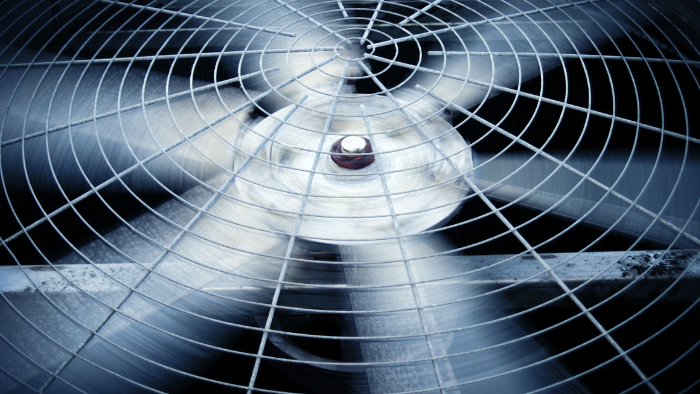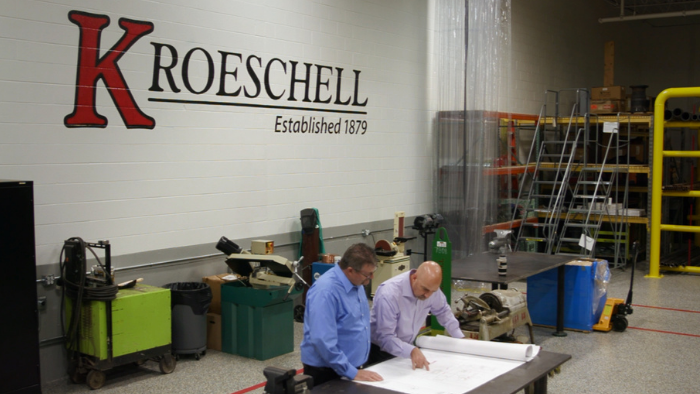Just like with any other piece of technology, your HVAC system requires your regular attention and fine-tuning. HVAC system optimization can provide improved airflow and distribution throughout your building.

8 Actionable Steps You Can Take to Optimize Your HVAC System
Optimizing your HVAC system is vital if you care about minimizing energy and water usage and saving on operational costs.
Right-Size the Fans
Right-sizing the fans within your HVAC system can increase the efficiency of the system’s air distribution.
Right-sized fans meet airflow requirements, improve the comfort level for occupants, and increase the lifespan of the equipment. The proper design of fans and equipment tuning can prevent cycling losses.
Switching to larger pulleys that reduce the fan rotation speed and adjust the static pressure can also help right-size the fans in your system.
Optimize Zone Level Performance
Zone level equipment consists of dual duct mixing dampers or VAV mixing boxes that mix zone dampers, reheat coils (which use hot water or electricity), and thermostats that allow users to control the equipment.
Dampers are essential to energy efficiency, but if they aren’t working correctly, they can cause energy loss. The dampers control how much hot or cold air passes through the HVAC ducts toward the system’s distribution network. The dampers within your HVAC system need to be regularly inspected.
The thermostats need to be re-calibrated every 6 to 12 months as well. Recalibration helps to prevent control errors later.
Install Conservation Measures
Your HVAC system should be aligned with your actual use requirements for proper temperature, humidity, air-change-per-hour, and space pressurization throughout the building.
Flow, power, temperature, and relative humidity sensors enable real-time control decisions and can inform performance indicators and measurement verification.
Clean Your Coils
The cleanliness of the coils in an HVAC system directly influences how efficiently heat gets transferred to the air stream. A clean coil has a lower water-side and air-side pressure drop, which makes for lower fan and pump energy consumption. The coils themselves need to be checked to make sure that water is flowing through when it is supposed to. If it’s not, the coils may be clogged.
Calibrate Your Sensors
If you want to control your HVAC system accurately, your sensors have to be clean. If the sensors are dirty, your control can be compromised.
Check Your Air Ducts
Are you not feeling enough air coming out of your vents? You might have duct leakage or crimping, which can stop a considerable amount of air from circulating correctly. Leakage means that a portion of the air supply is going somewhere that it’s not supposed to go. Crimping is when a duct is pinched shut, preventing or limiting airflow. Your ductwork and access ports should be checked regularly to ensure that air is flowing correctly.
Consider a Vibration Analysis
A vibration analysis can be conducted on the fans and motors within your system. Then, those vibration signatures can be compared to previous readings. If the signatures have changed, that means blades could be worn out or imbalanced. Due to its complexity, this task is best left to the professionals, but it can be a beneficial maintenance practice.

Upgrade Your Filtration System
Your filtration system can be upgraded to extend the surface area filter life, which will lead to a lower initial pressure drop, higher dust-holding capability, and higher structural ratings. This will allow your HVAC system to experience longer change cycles and will save energy through lower pressure drops.
Take Care of Your HVAC System, and Your HVAC System Will Take Care of You
Preventive maintenance is key to maintaining a healthy, fully functioning HVAC system.
A fully optimized HVAC system regulates the air supply in a building. It redistributes air to deliver the precise amount of heating or cooling required in each area of the building. This makes for improved energy efficiency and reduced energy waste, which means you see lower operating costs. Taking continuous steps to optimize your HVAC system keeps the air distribution in your building regulated while keeping a little extra money in your wallet.
Financial savings. That’s the bottom line.
Do you have HVAC-related questions? Reach out to us! We’d be happy to lend a hand.

